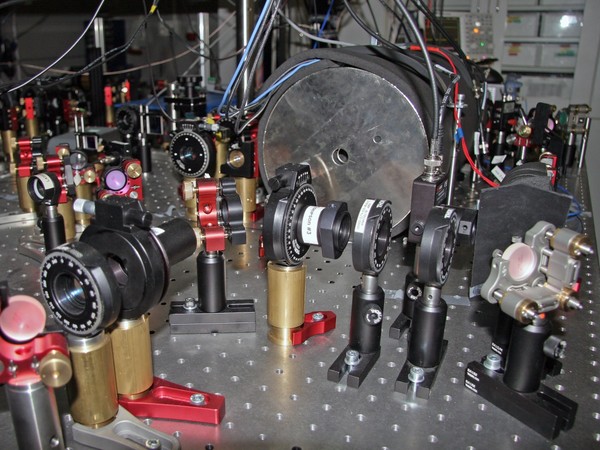The joint team of the Centre of Excellence at the Czech Science Foundation, consisting of experts from the Department of Optics at the Palacký University Faculty of Science in Olomouc and from the Institute of Scientific Instruments at the Czech Academy of Sciences in Brno, became the first in the world to detect the quantum properties of light emitted from a large number of single-atom sources. Their scientific findings were published in the most prestigious U.S. journal on physics, Physical Review Letters.
This light, also called non-classical, has properties elusive to common optics. Therefore it may have future applications in quantum technologies, which have been undergoing a major boom in, for instance, telecommunications and quantum computing.
“The experiment clearly shows that when the number of single-photon emitters is increased, the quantum properties of emitted light remain preserved, and the ability to measure them does not decrease dramatically,” said Lukáš Slodička from the UP Department of Optics when describing the results of their scientific work. According to him, this experiment opens an entirely new perspective on the description of light via the apparatus of quantum physics, since it reveals that the observable properties of even very intense light fluxes, close to fractions of lumens, may be incompatible with classical understanding of electromagnetic radiation.
The joint experimental team, located in a new laboratory in Brno, managed to detect non-classical radiation from a crystal with more than a thousand emitters – atomic calcium ions. The atoms were trapped in vacuum under a pressure of approximately 10 to 14 bars and cooled by lasers to the temperature of tens of microdegrees of Kelvin, that is, very close to absolute zero.
“In terms of difficulty, it was the most complicated experiment I have ever measured, since we constantly faced problems that would not be faced during a classical experiment,” said Petr Obšil from the UP Department of Optics with a smile. Non-classical radiation from a single emitter can be measured normally; however its observation from a high number of independent sources producing individual quanta of radiation, i.e. photons, entails a considerable experimental problem.
“I’m glad that we have managed to experimentally observe the properties of light in accordance with theoretical predictions that have long been waiting for this important confirmation. Non-classical properties of light are less visible with a growing number of emitters, which is typical for situations when the quantum world segues into the classical one which people perceive around themselves,” said the leader of the Olomouc team, Radim Filip, in his commentary to the experimental findings.
“The scientific team consisted of a diverse mixture of various scientific and technical experts from both institutions with long-term experience from pure theory through experiments to electronics. I could name especially Lukáš Lachman, Pham Minh Tuan and Adam Lešundák,” added the leader of the Brno team, Ondřej Číp.
Although still in the stage of basic research, scientists already have an idea or two on possible utilisation of these findings in practice. The presented findings may be applied in the characterisation of microscopic sources of light, such as single atoms or quantum dots.
